An Indian family’s dinner table is never just about food. It is about the style of cooking, the heirloom vessels the food was prepared in, and the pickles and condiments that spotlight each family’s story. Over the years, a steady crop of home cooks have been taking their treasured pickle recipes to a larger audience, sans the marketing adopted by mainstream brands.
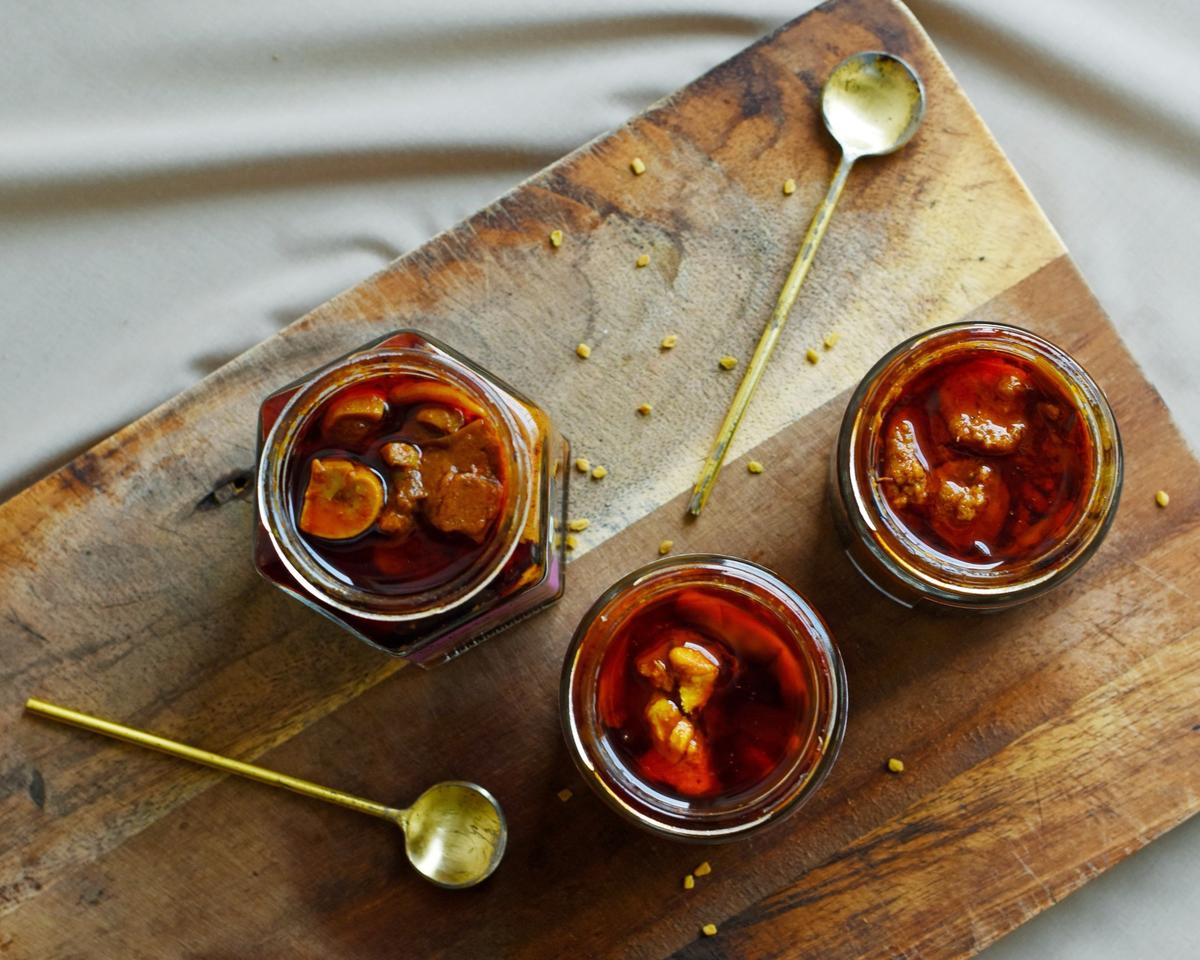
Offerings at Pickle Shickle
| Photo Credit:
Special Arrangement
In New Delhi, actor/producer sister-duo Prerna Chawla and Preetika Chawla paid homage to their family’s Burmese and Coorgi roots by starting Pickle Shickle in 2016. The duo offers 11 unique varieties inspired by regional flavours and family recipes, and their flagship is the pork pickle, crafted from their maternal grandmother’s Coorg recipe. “We’ve expanded this range to include jackfruit, lotus stem, mushroom, mutton, chicken, and prawn pickles. From our Burmese roots, we have Mere Piyaaz Gaye Rangoon (crispy onion and garlic chili oil) and Shrimply Burmese (a shrimp version). This winter, we added a bacon twist to this,” says Preetika.
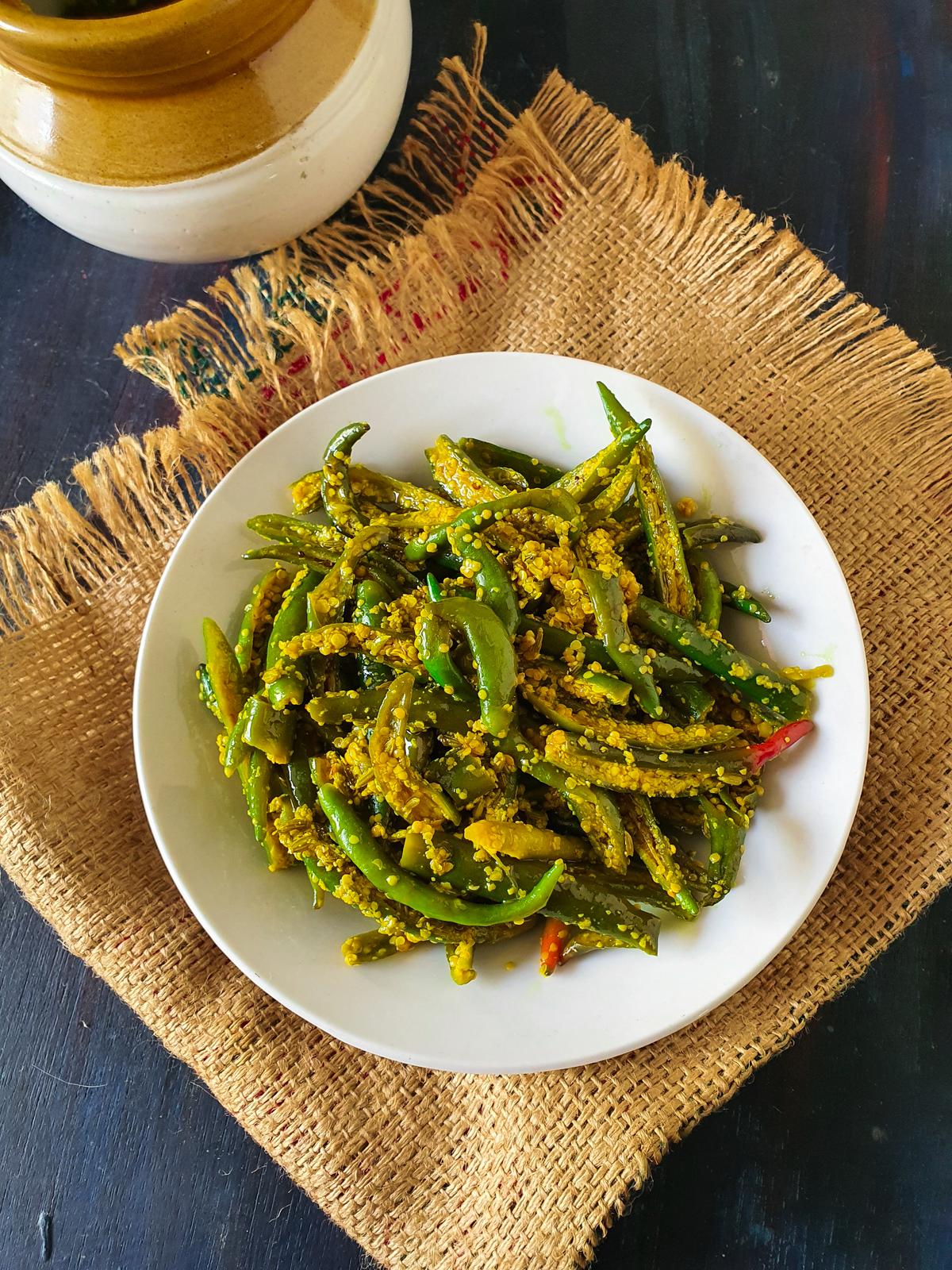
Chilies pickled with mustard seeds, salt and lemon juice
Murabba meets thokku
Down South, S Prasanna and Deepika Jayasurya started Just Sides in Chennai during the pandemic in 2020. While the couple started with preserves, thokku, and pasta sauces, they currently offer podis, pickles, health mixes, condiments, and more. For winter, they pickled elumichai oorgai (South Indian style lemon pickle), a lemon variant in Rajasthani style with green chilli and mustard oil, amla murabba, and kadaranga oorgai (wild lemon pickle), and are now gearing up for summer.
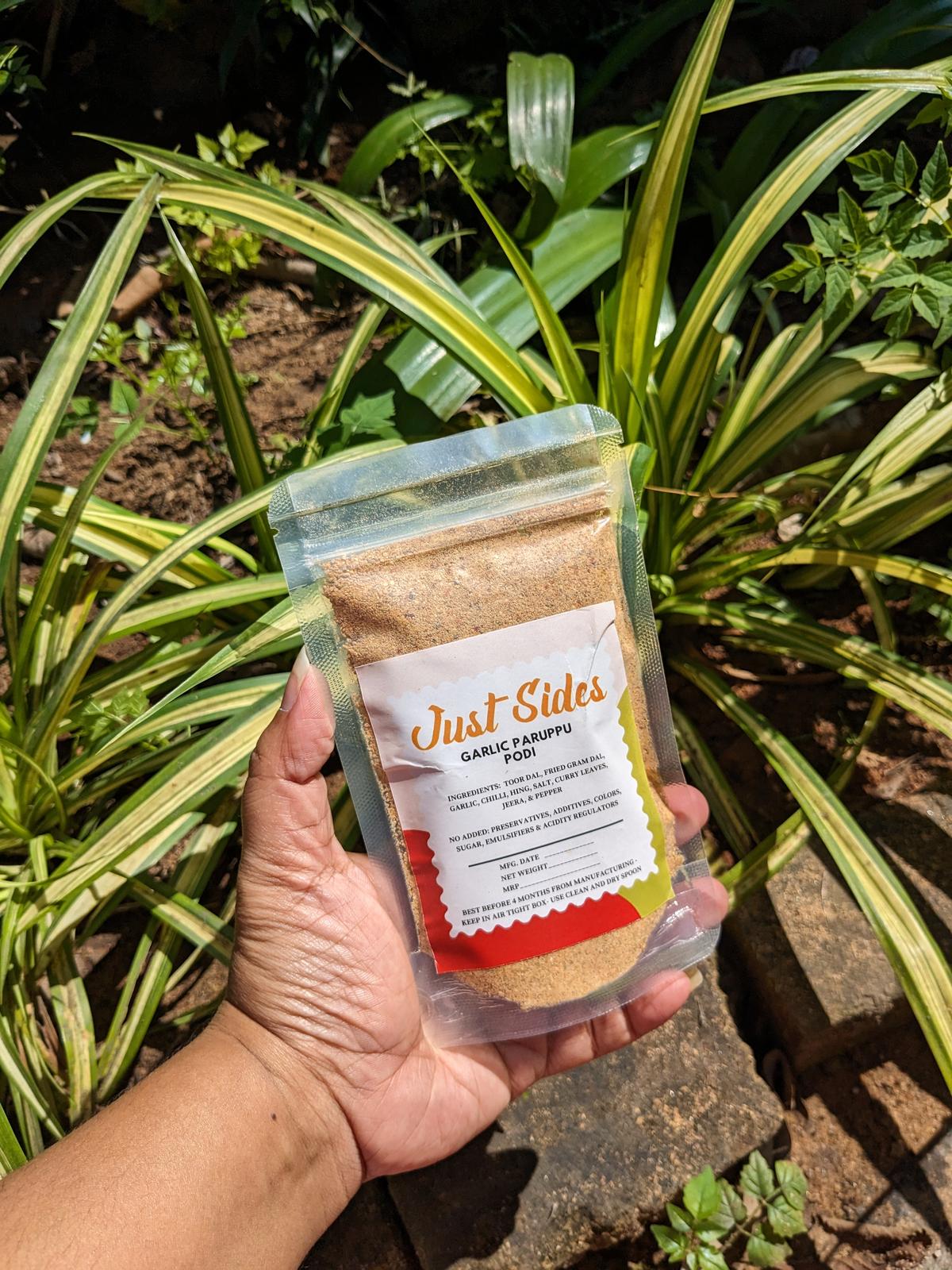
Tomato thokku at Just Sides
| Photo Credit:
Special Arrangement
“Prasanna sources the ingredients locally. The oil for pickles comes from our farm in Tindivanam and neighbouring farms; citron, lemon, rose, coriander, turmeric, tamarind, and ginger are also sourced from farmers directly in Erode, Tindivanam, Tirunelveli, etc; strawberry for our preserve comes from Mahabaleshwar,” says Deepika, adding that she, along with Prasanna quit their jobs to pursue Just Sides full-time.
Pickles being made at Sheilas
| Photo Credit:
Special Arrangement
From family cookbooks
Preetika explains how when their maternal grandfather, an Indian Air Force officer, was transferred to Coorg, their nani (maternal grandmother, a teacher and headmistress of Welham Girls School), took a sabbatical and started crafting pickles from the region. “My nani‘s parents were from Burma, and from there came our line of Burmese chilli oils,” explains Preetika, adding that several customers have shared recipes of Pakistani mirchi achaar, Bihari tomato chutney, etc. from their own family archives “which we hope to immortalise and stock up in our shelves”.
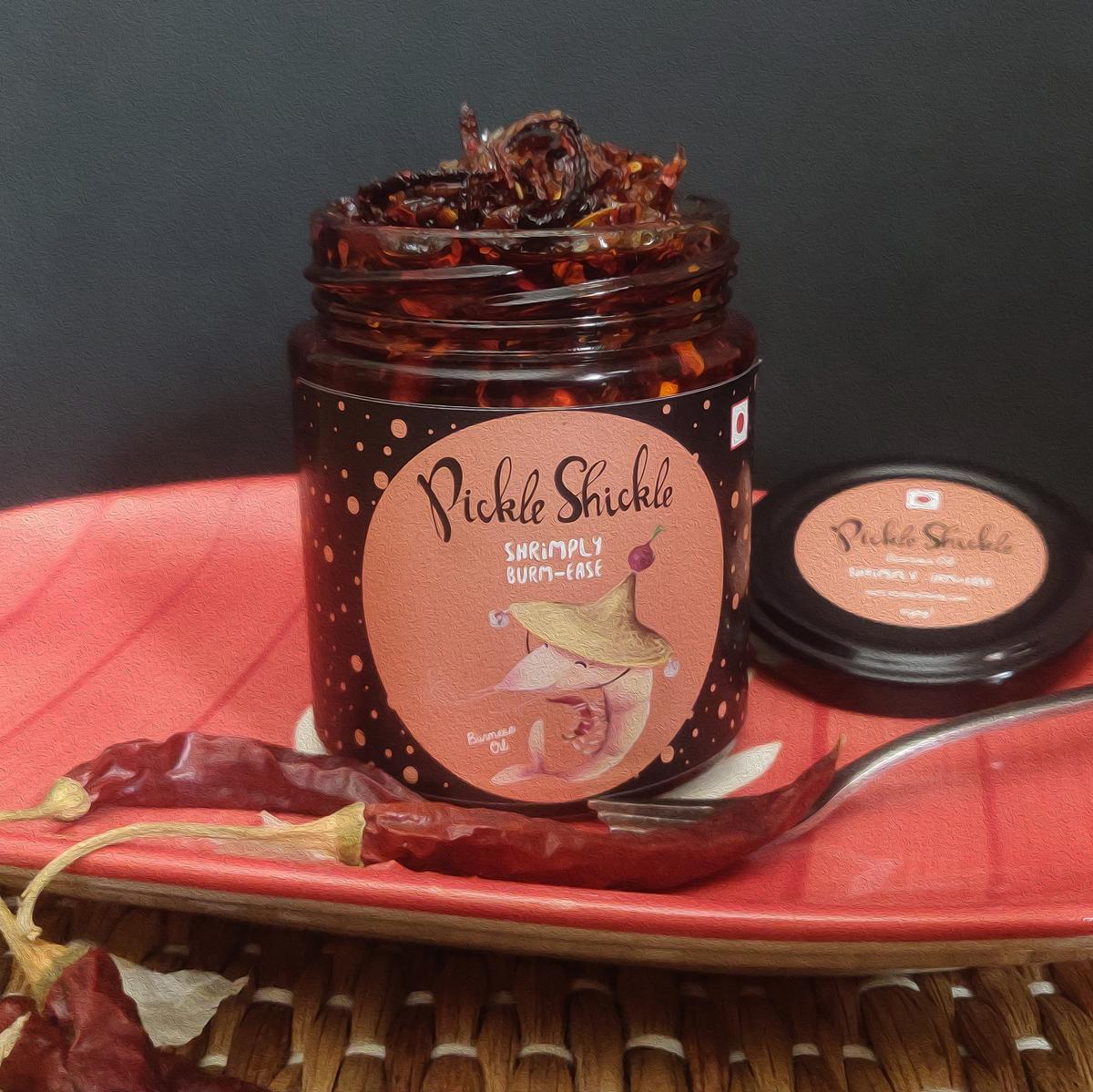
An offering from Pickle Shickle
| Photo Credit:
Special Arrangement
At Just Sides, most of the recipes are passed down by her mother-in-law, Prasanna’s grandmother, and a few aunts. “This stands true especially for the lemon ginger marmalade. Paati had a huge lemon tree and it produced so many lemons that she started making jam with ginger, and used to store it in the big jaadis (containers). Prasanna took the recipe and tweaked it slightly to marmalade consistency. Even the paruppu podi recipe is my mother’s, and curry leaves podi is my mother-in-law’s recipe that uses ginger,” says Deepika.
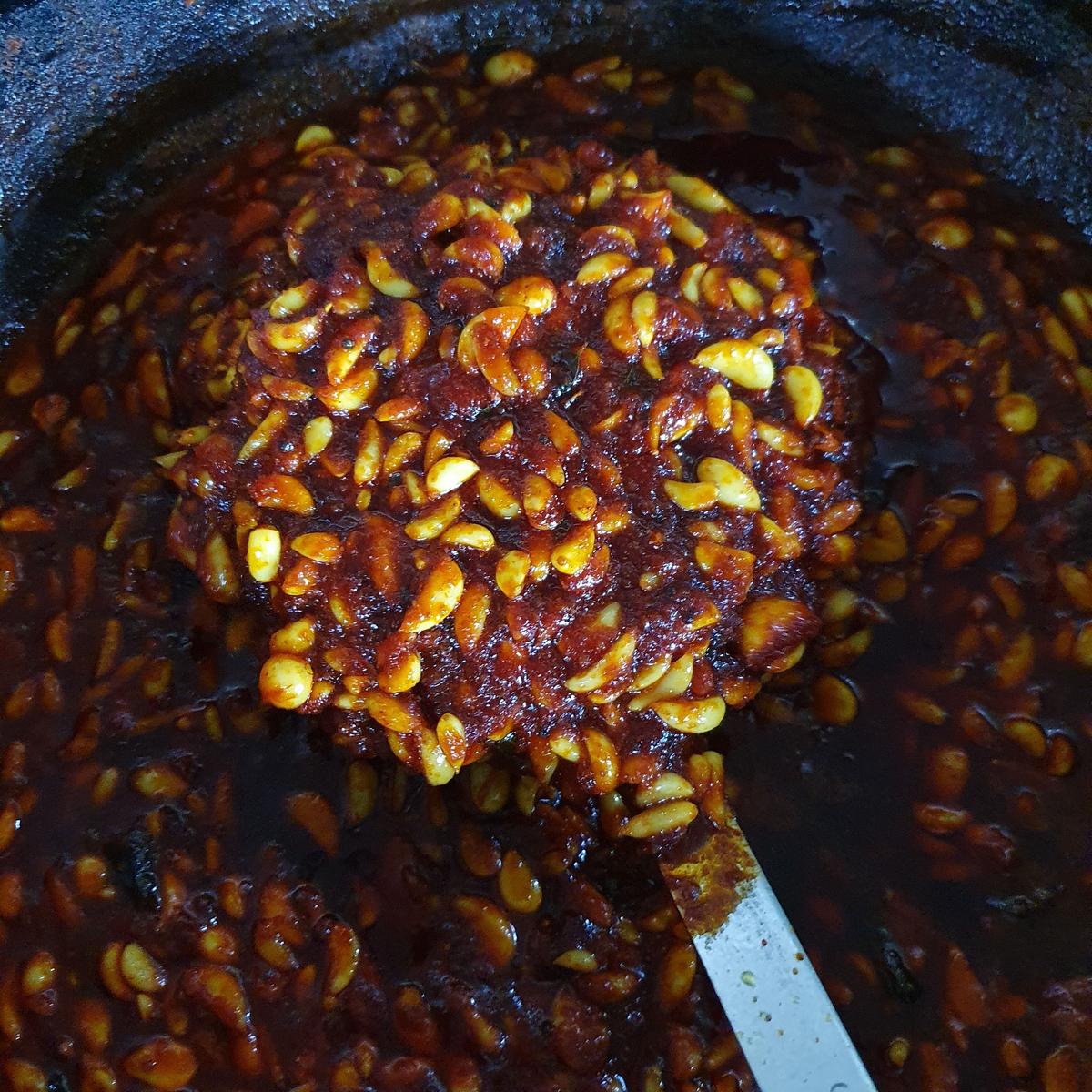
Garlic pickle in the making at Ammachi’s Pickles
| Photo Credit:
Special Arrangement
Secret ingredients and twists
What sets each pickle and its maker apart are not just ingredients, but techniques known only to them or their families. Deepika, for example, adds methi powder to finish off the thokku/pickles, and also adds a hint of jaggery to the podis and thokku. ”
An offering from Sheilas
| Photo Credit:
Special Arrangement
At Sheilas in Idukki, Kerala, 67-year-old Sheila Chacko Kallivayalil takes pride in their unique preparation methods. “We use only manual processes and have no machines apart from the essential mixer. We use wood fired chulhas (stoves) that add to the flavour through slow cooking,” she says of the brand that has made pickles and jams since 2010. “Our recipes are mostly traditional, derived from my mother’s and grandmother’s cookbooks. I grew up in North India so some of my pickles, like the brinjal pickle, have been tweaked to include North Indian elements which appealed to me while I was growing up in Bihar,” says Sheila, who runs the brand with her son Ouseph Chacko.
Pickles from Vatha’s
| Photo Credit:
Special Arrangement
Ammachi’s Pickles in Coimbatore is a nod to VT Shashipriya’s family heritage. She talks about eating pickles at every meal, and homemade pickles made by her mother and periamma (aunt) adorned all mealtimes. “We used to have different oorugai for every meal, starting from breakfast to dinner. My periamma used to make the best pickles, a skill she learned from her neighbour in Kumbakonam. Whereas my mother learnt how to make avvakai and vedikai oorugai from her friends,” says Shashipriya,who pickles amla, drumstick, garlic, small onion, tender jackfruit, bilimbi, etc, and meaty ones with chicken, fish, and mutton.
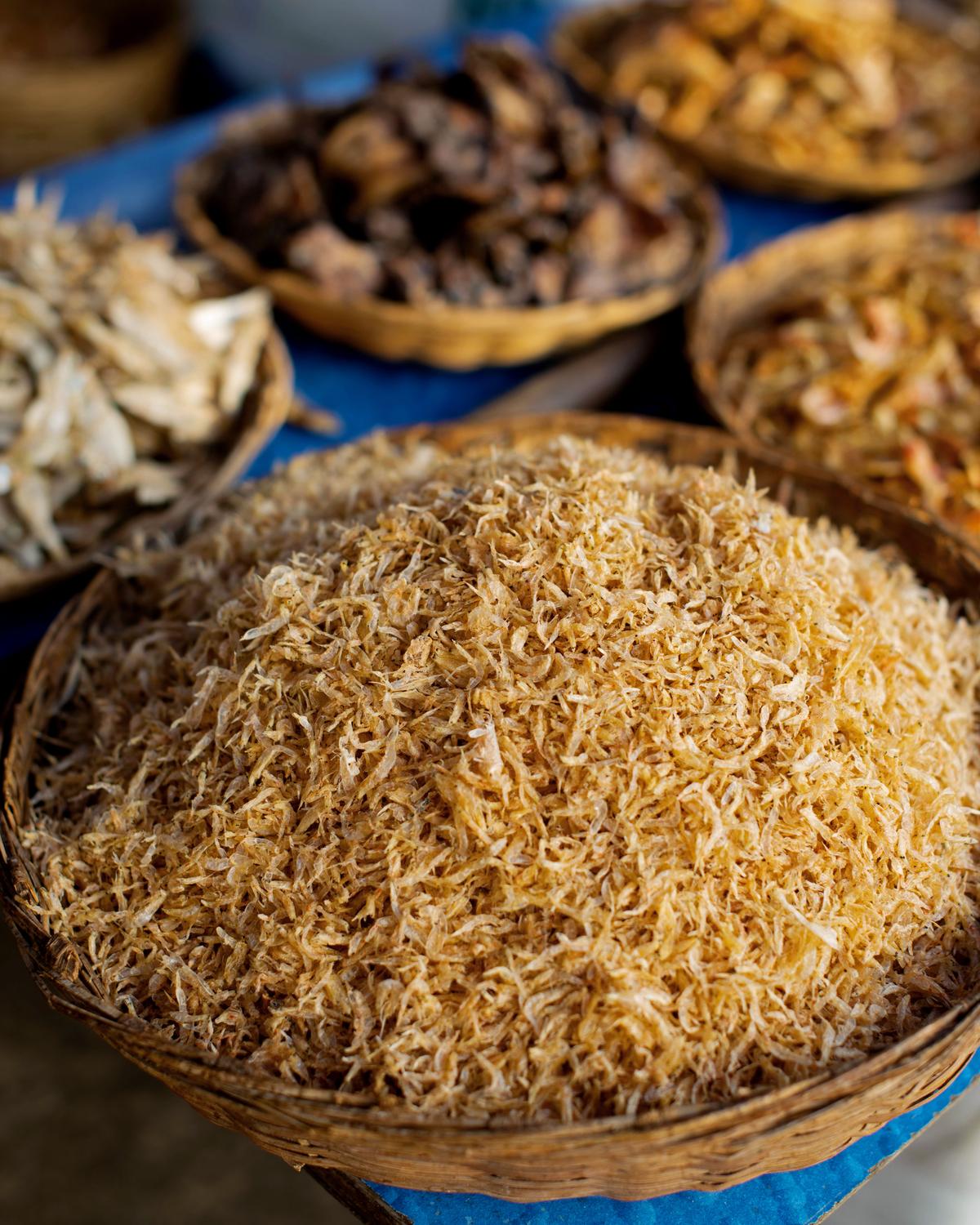
Pickle making ingredients at Pickle Shickle
| Photo Credit:
Special Arrangement
While Sheilas first product and current flagship one was plantain jam, their catalogue progressed to guava jam, and then pickles. “The first pickle we made was my mother’s hot and sweet lime. Currently we make 12 pickles, three of which are seafood pickles, and three jams, that are subject to the availability of the star ingredient,” she says, adding that they now make between 1,000 and 2,000 bottles a month, and the team comprises four women. The kandhari chilli (bird’s eye chilli), vilumbi puli (bilimbi), and mango are seasonal.
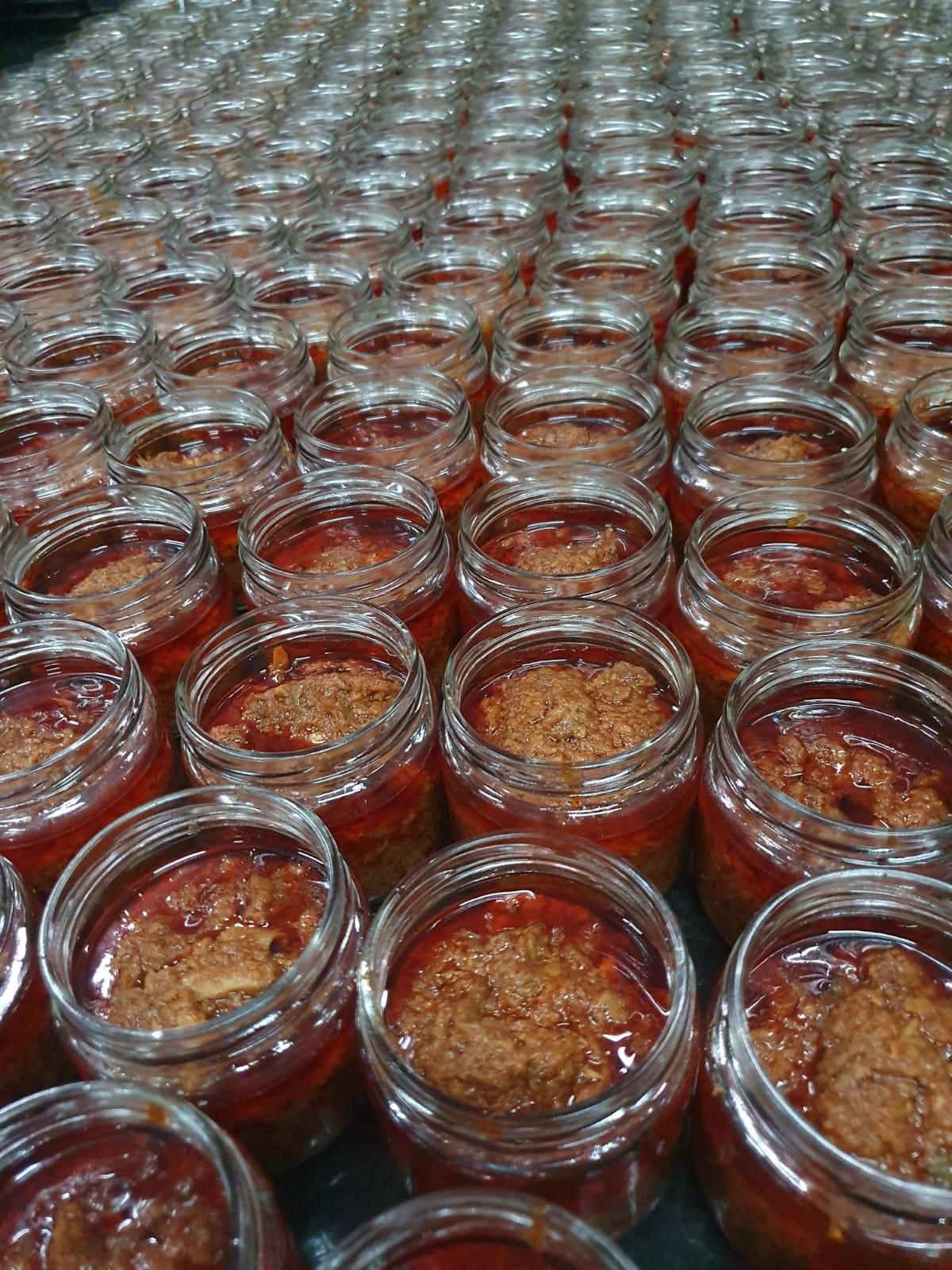
The bottling process at Ammachi Pickle’s
| Photo Credit:
Special Arrangement
At Ammachi Pickle’s, the mahani kilangu thayir oorugai is a fast-moving product made from nannari/sarasparilla roots. This pickle doesn’t have any oil, and is soaked in curd made from cow’s milk, and stays good for one year. The bilimbi (tree sorrel) and tender jackfruit pickles are also popular since they are seasonal
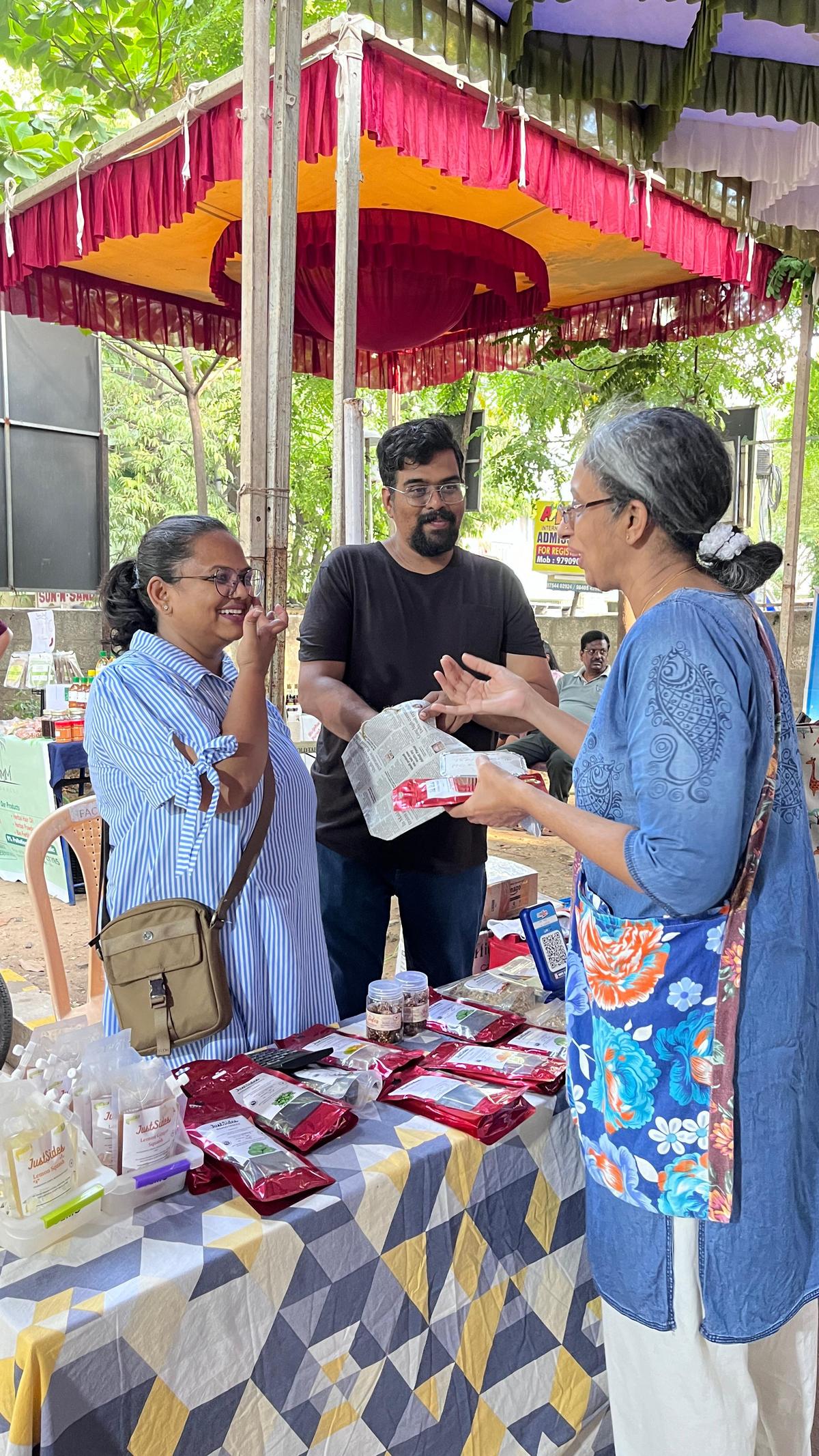
Deepika Jayasurya and S Prasanna at a farmers’ market
| Photo Credit:
Special Arrangement
Lockdown launches
During the 2020 lockdown, Roshini Sameer and her mother Anasuya started supplying homecooked South Indian food to friends and family who lived alone. “When we started getting regular inquiries for everyday pantry staples, we decided to kickstart Rasa & Co with podis and pickles,” says Roshini, who launched the label with Karnataka-style pantry staples such as chutney podi flavours, sambar powder, vangi bhath powder, puliyogare gojju, and a range of pickles such as tomato, lime and pepper, gooseberry, etc. “We are now pickling lime chilli pickle, and in the summer we will make our bestsellers: mango thokku and avakai pickle.” With ingredients sourced from farms in the region, the pickles are heirloom recipes and Roshini makes eight kilos in a batch.
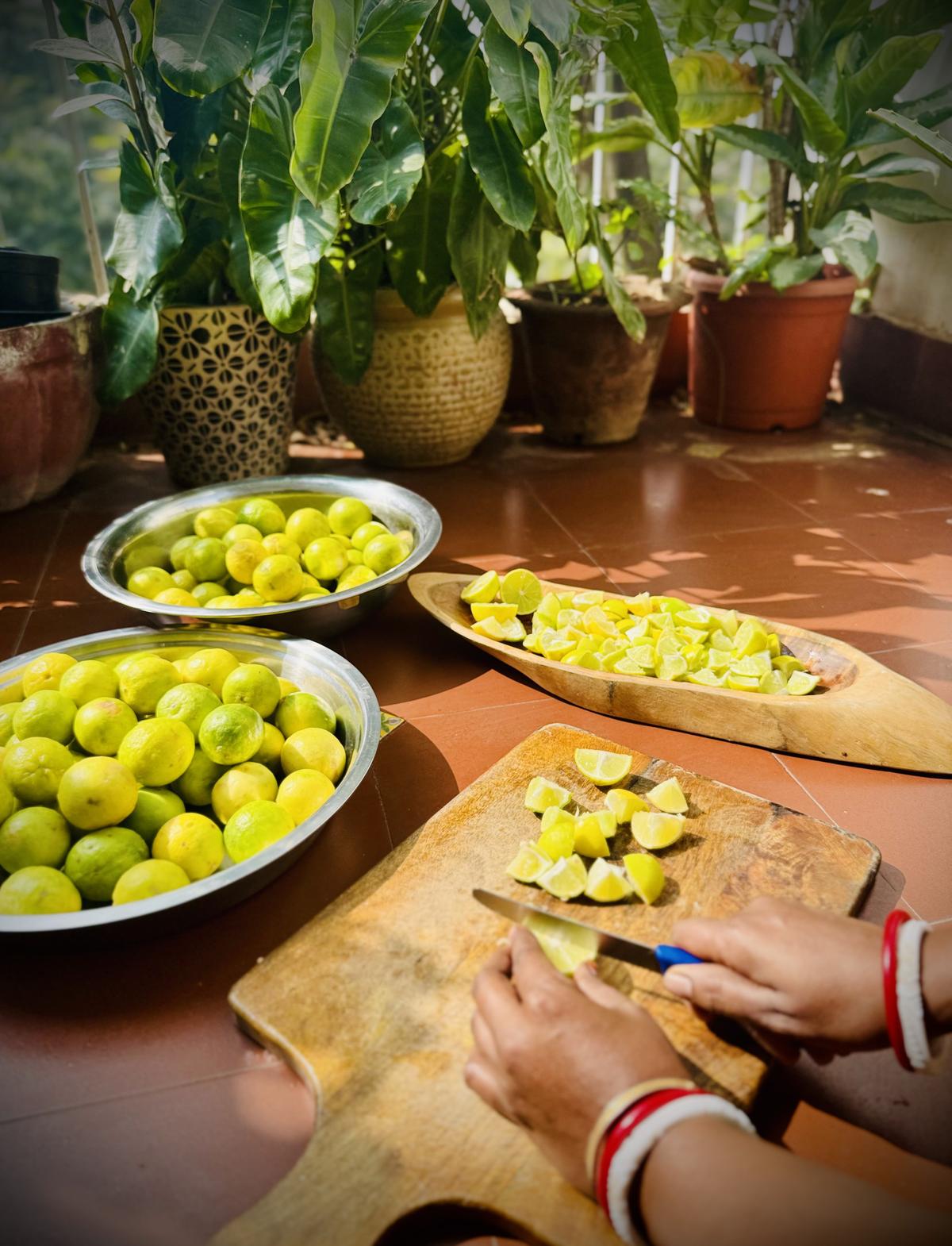
Lemon pickle being made at Rasa & Co
| Photo Credit:
Special Arrangement
Another brand born during the pandemic is Vatha’s that brings to the fore Malabar flavours through its range of pickles, cereal powders, puddings, and juices. Helmed by Saffia KK, endearingly known as Vava Thatha or Vatha, the brand launched in 2021 with pickles such as garlic, beetroot, dates, chicken, fish, beef (buffalo meat), mussels, prawns and squid; a range of podis, and more. “Like her father, late Hamza Haji, founder of the Sagar Restaurant in Calicut, Vatha also has a passion for food,” says Sarfras Roshan, her son, and director at the brand.
Vatha’s beef pickle
| Photo Credit:
Special Arrangement
Today, Vatha’s operates from a small manufacturing unit in Korangad, Thamarassery, employing a team of four women. “Saffia has been pickling all the variants, and mussels will not be pickled after winter since the specific quality of mussels we look for is not available after February,” adds Sarfras.
Sheila Chacko Kallivayalil
| Photo Credit:
Special Arrangement
Challenges in a bottle
Preetika addresses how running a small-batch, artisanal business comes with its challenges “like sourcing raw materials in small quantities and dealing with limited kitchen resources. The profit margins are tight, making growth slower than in commercial operations”.
Small onion pickle at Ammachi’s Pickles
| Photo Credit:
Special Arrangement
On similar lines, Roshini adds how products are priced high due to low volumes. “Our efforts to be sustainable come at a higher cost. For example, glass jars used to sell pickles cost much more than a plastic bottle. The pouches which we use to sell the powders are biodegradable and more expensive than regular kraft paper pouches.”
An offering from Rasa & Co
| Photo Credit:
Special Arrangement
Pickling also requires a good hand that knows how to pick the right vegetable, and handle the meat. Sheilas kandhari pickle necessitates the destalking of every single tiny chilli by hand, which is a laborious process. “A kilo of kandhari chillies could contain thousands of individual chillies,” she says. As for the fish pickle, “we carefully debone the seer fish so that it is only the flesh and the masala that account for the weight.”
This year, Sheila plans on expanding the pickle range to include a green chilli variant, among others, and enter the chips segment. “Our finely sliced jackfruit chips have been well-received, and we want to make banana chips too,” she concludes.
Published – February 07, 2025 03:48 pm IST